Documenting extension program outcomes, monitoring progress and evaluating performance is typically complicated and difficult to achieve in extension – TOP is a proven process that can be used to achieve all three. The Targeting Outcomes of Programs (TOP) approach is a proven methodology developed from Bennett’s Hierarchy, through which outcomes can be tracked and program and performance evaluation carried out; to improve subsequent programs, document results, provide accountability and plan how to market programs.
This post will give a good overview and introduction and the paper written by Rockwell and Bennett (2004) provides all the detail that fully describes what it is and how it can be used.
TOP helps target outcomes, track progress and evaluate performance
As TOP was developed from Bennett’s Hierarchy it is based on an approach that has decades of proven performance. Claude Bennett himself and Kay Rockwell developed the TOP approach from the Hierarchy.
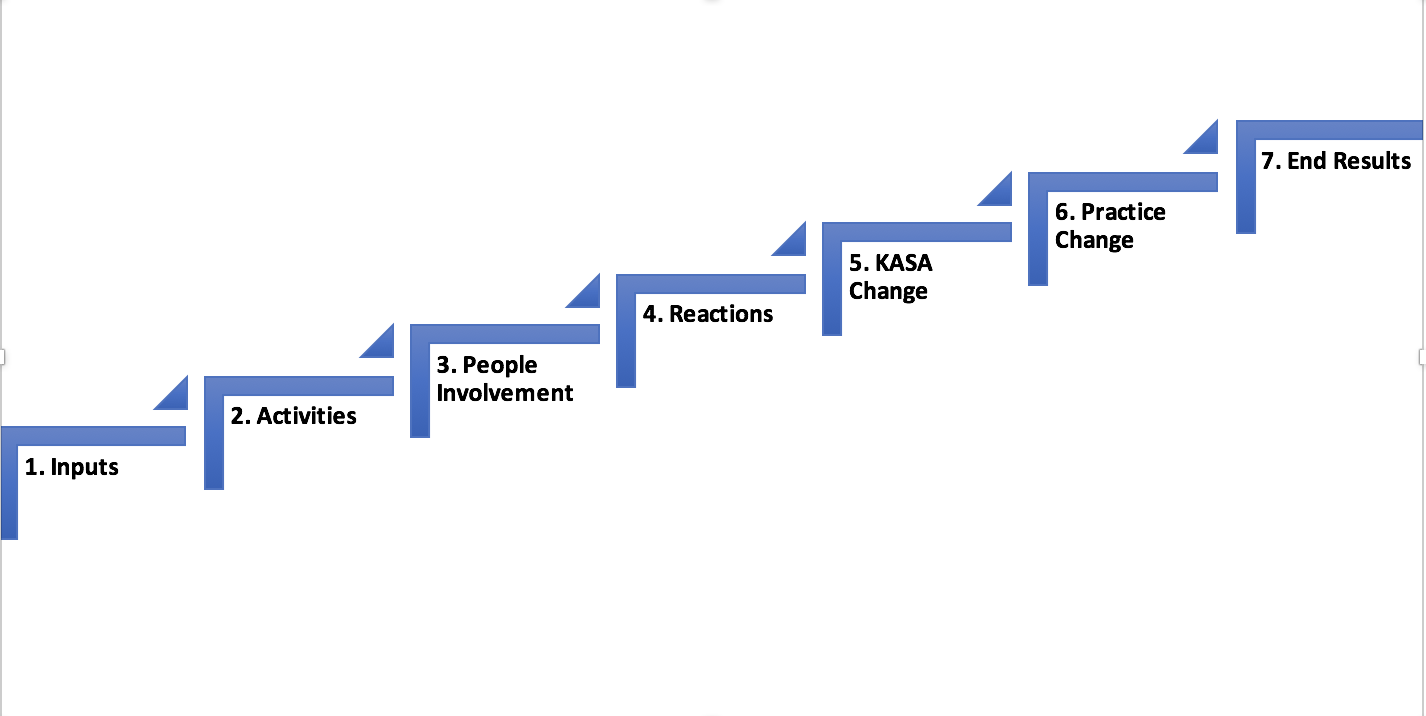
Essentially the Targeting Outcome Program includes a practical hierarchy for:
- Targeting outcomes.
- Tracking progress towards achieving targets.
- Evaluating the degree to which programs impact the targeted social, economic and/or environmental conditions.
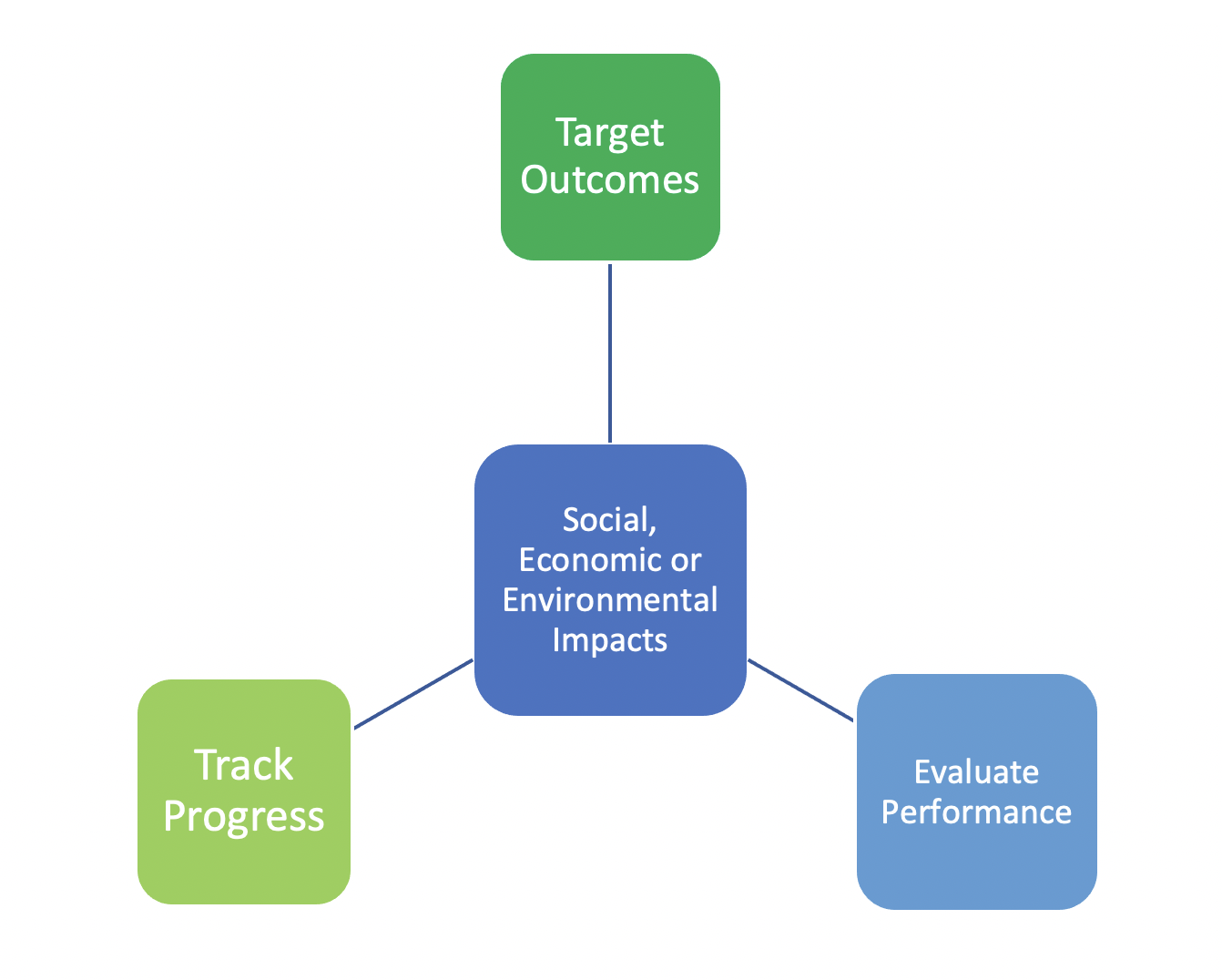
Through TOP the priorities of the extension project or program are based on the views of all stakeholders.
TOP Uses a Two Sided Hierarchy with Seven Levels
It assumes that the program development and evaluation reflect the same seven levels.
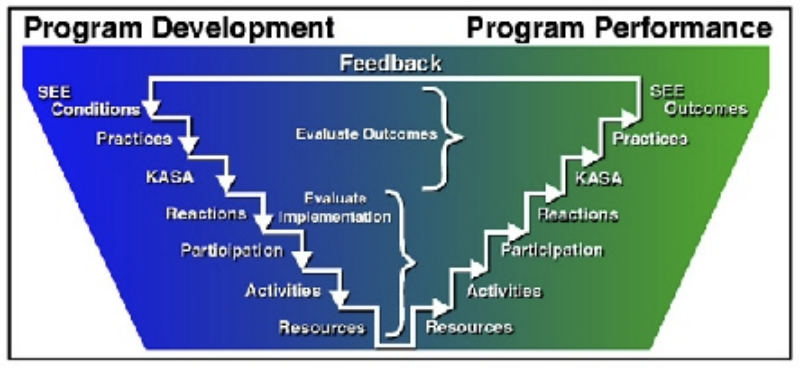
In program development you start on the left side of the top level and work down.
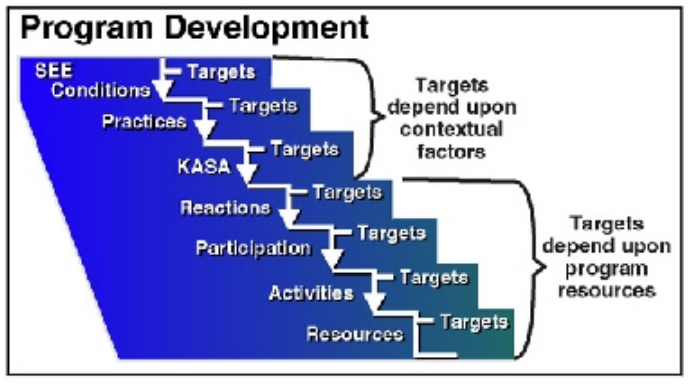
In assessing performance you start at the bottom level on the right hand side and work up.
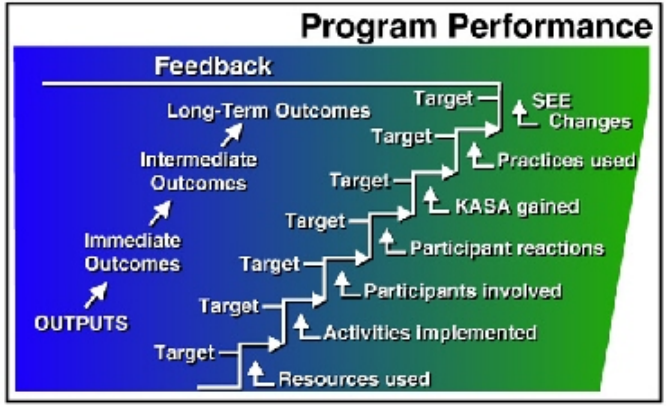
Questions and Indicators
TOP suggests questions and uses indicators (both subjective and objective) to monitor and evaluate performance across the seven levels:
- Social, Economic or Environmental conditions (desired)
- Practices
- KASA (Knowledge, Attitudes, Skills, Behaviour)
- Reactions
- Participation
- Activities
- Resources
For a full explanation on the levels, click here.
The indicators are applied to specific program targets and outcomes and suggestions on both questions and indicators are provided in the full paper.
Documenting program outcomes, monitoring progress and evaluating performance is typically complicated and difficult to achieve in extension – TOP is a proven process that can be used to achieve all three.
For More Information
Rockwell, K and Bennett, C. (2004). Targeting Outcomes of Programs: A Hierarchy for Targeting Outcomes and Evaluating Their Achievement. Faculty Publications: Agricultural Leadership, Education & Communication Department. University of Nebraska, Lincoln.
